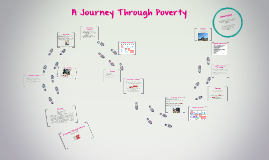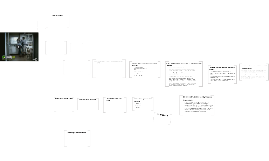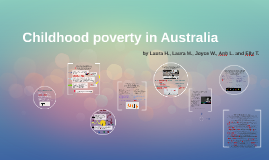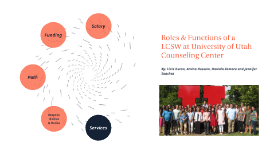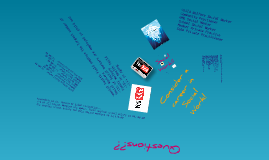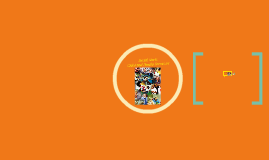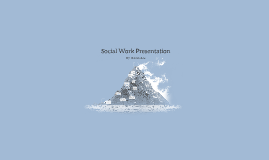Social Work Presentation
Transcript: (Saunders, 2005; Binns, Howat, Smith, & Jancey, 2016). VS Children living in Poverty (Hocking, 2013) Children in lone families are more than three times likely to be living in poverty than their counterparts in couple families, with a poverty rate of 40.6% compared to 12.5%. 51.5% of those receiving Parenting Payment were living below the poverty lines. Many could not afford up-to-date school books and clothes, or leisure activity for their children. Parenting Payment does little to provide financial assistance for its recipients. The program did not take into account of the barriers faced by these families such as the lack of job skills, health reasons, time needed to care for a young child, etc Newstart allowance affected 80,000 lone parents Introduced in 1998 2 categories: Parenting Payment Single and Parenting Payment Partnered A single parent with one child can receive up to $258 per week Recipients whose oldest child is 6 years old or older must agree to mutual obligation Parenting Payment = $176.60 per fortnight Newstart allowance = $62 per fortnight Adequacy of Parenting Payment Application to children? (Binns, Howat, Smith, & Jancey, 2016; Callander, Schofield, & Shrestha, 2012) Quantitative Data Demonstrating Poverty in Indigenous Children Hocking, J. (2013). Labour Force, Australia: Labour Force Status and Other Characteristics of Families. Abs.gov.au. Retrieved from http://www.abs.gov.au/ausstats/abs@.nsf/Products/6224.0.55.001~Jun%202012~Chapter~one%20Parent%20Families Principles: *Social Morality* -Agency Focus (Bisman, 2004) Violence and fear (Kirkman, Keys, Bodzak, & Turner, 2010). (Binns, Howat, Smith, & Jancey, 2016; Callander, Schofield, & Shrestha, 2012) There was a 2% increase in child poverty from 2004 - 2014 Social Development Social Security Benefits (Australian Department of Human Services,2017) (Australian Government, 2017) Holistic multidimentional approach Values *Respect for Basic Rights *Support self-determination Commitment to individual Freedom Sense of Social responsibility (Congress, E. (2006))4) 2.99 million people live below the poverty line, 731,000 (17.4%) are children. Education and employment (Ferguson, Fallon, & Wilesmith, 2012) Ages 0-18 various developmental stages (Buultjens & Buultjens, 2016). poverty affects development Can contribute to issues in later life(Harms, 2015) Getting poverty issue back on the political agenda (Saunders, 2005) (Saunders, 2011; Martinez & Perales, 2015). 69.9% of Aboriginal and Torres Strait Islander children are in pre-school, compared with the 88.7% of non indigenous children. (Australian Department of Human Services,2017) Claymore Experiences and impacts of poverty on children Understanding the causes of childhood poverty, and the influence of individualist & structural approaches Parenting Payment Discussion of how social work knowledge (values, ethics, principles and theories) could inform your practice with this population group INDIVIDUALIST: Puts the blame & responsibility on the individual for their circumstances. States that individuals have choices and make choices. Can we apply this to children? Does a child choose to be born into poverty? Who is responsible for the child? (Saunders 2005) REFERENCE LIST: (ACOSS, 2016) (Dockery & Stromback, 2004) Children’s social security benefits mainly target the cost it takes for parents to raise a child. For example, Child Care Benefits, Youth Allowance, etc. Most are income-tested and subjected to a range of eligibility requirements. Most family receive Parenting Payment and Family Tax Benefit: aiming to encourage workforce participation STRUCTURAL Considers the structural state of society and government, including welfare systems, policy and equality within our society. Can the lack of the above, be considered a cause for childhood poverty? Is it society's responsibility for the wellbing of children? (Butler, 2016) Theories: -System Theory Influence on the Social System on Individual lives *Natural System= Support system *Formal System=Community *Societal System= Governmental Department -Ecological System Theory The individuals influence on their surrounding environment *Collective Action *Intervention (Munford, Connolly, O'Donoghue, & Nash, 2005) Australian Council of Social Service. (2016). Poverty in Australia 2016 Report. Retrieved from http://www.acoss.org.au/wp-content/uploads/2016/10/Poverty-in-Australia-2016.pdf Australian Council of Social Service. (2009). Could you raise 2 children alone on $550 a week? Sole parent families and the pension increase. Retrieved from http://www.acoss.org.au/images/uploads/Factsheet-sole_parent_payments-240409.pdf Australian Department of Human Services. (2017). Payments for Families. Retrieved from https://www.humanservices.gov.au/customer/subjects/payments-families Binns, C., Howat, P., Smith, J. A., & Jancey, J. (2016). Children, poverty and health promotion in Australia. Health Promotion Journal of Australia, 27(3), 181.






